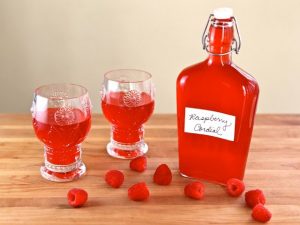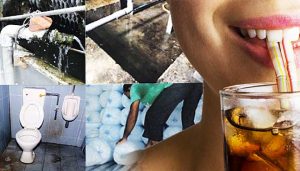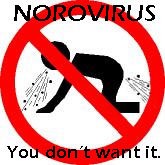Jim Chan, a public health inspector for 36 years who retired in 2013 as manager of the food safety program at Toronto Public Heath, writes:
 During my career as a Health Inspector, one question often asked by the public is “How safe is the ice in food and drinks serve in restaurants?” There is no easy Yes or No answer without having to explain how ice can be contaminated and in what conditions that ice can cause illness. In general, we tend to view ice much the same way we do with drinking water coming out from the tap, and assume that both water and ice are “clean.” Ice must be treated like food, as both can be a source of foodborne illness if not handled safely.
During my career as a Health Inspector, one question often asked by the public is “How safe is the ice in food and drinks serve in restaurants?” There is no easy Yes or No answer without having to explain how ice can be contaminated and in what conditions that ice can cause illness. In general, we tend to view ice much the same way we do with drinking water coming out from the tap, and assume that both water and ice are “clean.” Ice must be treated like food, as both can be a source of foodborne illness if not handled safely.
Both the U.S. Food and Drug Administration and Canada have health code regulations around ice and both define ice as food. Here’s an example of code requirements for ice safety under Food Safety legislation: Ontario Health Protection and Promotion Act R.R.O. 1990, Regulation 562 (Food Premises) – Ice used in the preparation and processing of food or drink shall be made from potable water and shall be stored and handled in a sanitary manner. Most pathogenic organisms do not readily multiply in ice in restaurants that’s used for food and drinks. However, scientific research has also shown that some bacteria and viruses can survive cold or freezing for long period of time. Therefore, it is important for restaurant operators to ensure their ice does not become contaminated.
 Contamination can be introduced by airborne particles, contaminated water supply, food handlers or dirty utensils. But the main cause of ice in restaurants, bars and hotels becoming contaminated is human error: improper ice handling. Training staff is critical to ice safety. Contaminated ice can cause foodborne illness – reduce your risk with regular cleanings, periodic thorough sanitation (by a professional), regular maintenance, and, of course, training. Note: If your commercial ice machine is in a high yeast environment (pizzerias and breweries for example) or if you’re water source is from a well, you will need additional professional deep cleanings.
Contamination can be introduced by airborne particles, contaminated water supply, food handlers or dirty utensils. But the main cause of ice in restaurants, bars and hotels becoming contaminated is human error: improper ice handling. Training staff is critical to ice safety. Contaminated ice can cause foodborne illness – reduce your risk with regular cleanings, periodic thorough sanitation (by a professional), regular maintenance, and, of course, training. Note: If your commercial ice machine is in a high yeast environment (pizzerias and breweries for example) or if you’re water source is from a well, you will need additional professional deep cleanings.
Lack of regular inspections, exposure to poor hygiene and improper handling of ice will increase the risk of contamination. You don’t want your restaurant or hotel guests getting sick because of inadequate cleanings and sanitation of your ice machine.
To reduce the risk of ice being a source of foodborne illness, restaurant operators and managers should be aware of the following points and to conduct regular self-inspection to identify problems early:
1) Train restaurant or bar staff in proper ice handling practices (bar and kitchen)
Wash hands before getting ice from ice making machine.
Hold only the ice scoop handle and not other parts of the scoop.
Do not scoop ice using water glasses or cups and never handle the ice with hands.
Do not return unused ice to the ice machine/ice bin.
Keep doors of the commercial ice machine closed except when removing ice.
Ice scoops should be stored outside the ice maker and kept in a clean container. Ice scoop & container should be washed & sanitized regularly.
Do not store anything such as food, drinks, fruit etc. in the ice machine. Never use ice machine as a refrigerator!
Clean the ice making machine regularly and fix all problems identified.
Never put Anything in the ice bin…except clean, untouched ice!
2) Inspect and clean/sanitize the ice making machine regularly
Inspect the exterior of the machine. Ensure the door, handle and hatch of the ice machine are clean and in good repair.
Look for any evidence of growth of scum, slime or mold inside the machine. If such growths are observed, immediately clean according to the manufacturer’s instructions. (Tip: The ice should be removed from the ice bin and disposed during cleaning to avoid cross contamination by chemicals).
 Routine cleaning of an ice making machine should be done at least weekly by staff and the process can be as simple as running a sanitizing solution through the cycle, then running two cycles of ice, dispose of these before running ice for drinks and food. Make sure this is part of your weekly cleaning schedule!
Routine cleaning of an ice making machine should be done at least weekly by staff and the process can be as simple as running a sanitizing solution through the cycle, then running two cycles of ice, dispose of these before running ice for drinks and food. Make sure this is part of your weekly cleaning schedule!
3) Routine Ice Machine Services, Maintenance and Major Cleaning/Sanitizing
The ice making machine should be serviced by a professional technician at least twice year, which requires being taken apart for inspection and major cleaning and sanitizing. This needs to be performed by a professional! By choosing Easy Ice for your ice machine (instead of owning or leasing), your ice maker subscription includes 2 deep cleanings a year. And they schedule it for you – saving you not only time but money! And you’re assured the ice machine is clean when the Health Inspector stops by.
A typical cleaning routine would include the following steps:
Turn off the electrical supply and empty the ice bin.
Remove the protective curtain or cover (if present) and check the drain to ensure it is clear.
Clean all surfaces inside using hot water and a cleaner or detergent, follow with an antibacterial sanitizer by wiping all internal surfaces and allow adequate contact-time for the sanitizer to work. (Tip: Do not rinse off the surfaces, allow to air dry)
Wash and sanitize the plastic curtains, cover, ice scoops etc… (Tip: Use hot water and detergent for washing and then soak in a sterilizing solution as per manufacturer’s instructions)
Check the door and ensure it can close tightly to prevent dirt entering the ice making machine.
Switch machine back on and ensure it works properly.
4) Additional factors to consider for cleaning and sanitizing of commercial ice machines
Biofilms
Microorganisms such as bacteria, can grow together and secret a matrix of polymers to form a protective shield known as Biofilm on surfaces such as food & ice container, ice machine walls, trays etc. Think of the bacteria producing a secretion to make a ‘bionic blanket’ covering themselves and protecting them from attack by chemicals such as cleaning & sanitizing agents. Within the biofilm, pathogens like Salmonella, Listeria, E. coli, Shigella can survive and can cause spoilage or infection later when released.
The best way to prevent biofilms from developing is regular cleaning & sanitizing all surfaces that come in contact with food, drinks & ice. However, if biofilms already formed, surfaces must be physically cleaned by scrubbing and than follow with sanitizing to kill the pathogens to ensure a clean and safe environment for food, drinks & ice.
Ice safety is as important as food safety and should be a priority for your restaurant, hotel or bar. By following the above protocol, you can be assured of serving your guests clean, safe ice. Choose to ignore these key points and you may receive a fine, or worse – a shut down, from the Health Inspector. Protect your reputation, your guests and your bank account.
 Later on Friday, Haukeland Hospital reported that it is campylobacter bacteria that cause intestinal infection, which has been detected in admitted from Askøy. Campylobacter is a bacterium that E-coli often finds along with.
Later on Friday, Haukeland Hospital reported that it is campylobacter bacteria that cause intestinal infection, which has been detected in admitted from Askøy. Campylobacter is a bacterium that E-coli often finds along with.









